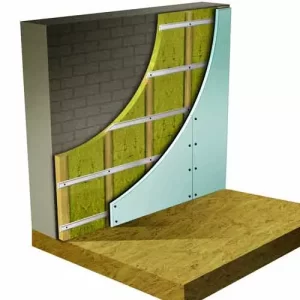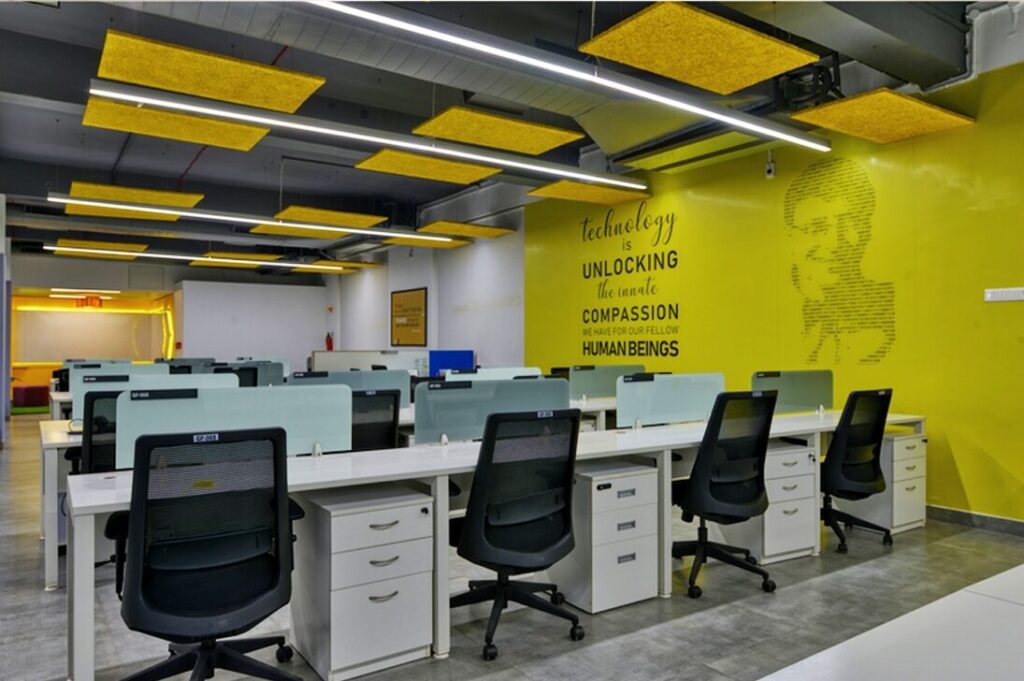Improving Room Acoustics: Effective Strategies and Techniques
Introduction
Effective room acoustics significantly impact the quality of sound produced within a space. Whether in a performance hall, recording studio, or even a lecture room, proper sound management can make all the difference in achieving clarity and balance.
In this article on “Improving Room Acoustics: Effective Strategies and Techniques,” we explore various methods of enhancing sound quality in any given space. From adjusting the layout of furniture to installing sound-absorbing panels, there are several easy and cost-effective approaches to room acoustics that can make a noticeable difference.
We also consider more advanced techniques such as the usage of diffusers and reflectors to manage sound waves. By understanding the principles of sound and employing the right techniques, anyone can improve the acoustics of their space and experience better, clearer sound.
Understanding Room Acoustics
Understanding room acoustics is essential for Improving Room Acoustics and ensuring that sound quality is maintained in a given space. It involves studying how sound behaves in a particular room and how it interacts with various surfaces such as walls, ceiling, and floor. The goal of understanding room acoustics is to create a space that provides the best possible sound quality for its intended use.
One of the key factors to consider when improving room acoustics is the size and shape of the room. This can be done by using acoustic analysis software to determine the room’s acoustic characteristics. The software can also help in identifying any sound reflections that may cause sound distortion or delay.
Another critical aspect of understanding room acoustics is the choice of acoustic materials used in the room. Materials such as acoustic panels, curtains, and diffusers are commonly used to absorb or deflect sound waves and improve sound quality. The placement of these materials in the room can also affect the room’s acoustics.
Proper placement of speakers and microphones is also essential in improving room acoustics. It is important to place speakers and microphones in areas where sound reflections are minimized to avoid sound distortion or delay.
In conclusion, understanding room acoustics is paramount in Improving Room Acoustics for optimal sound quality. It involves studying the size and shape of the room, the choice of acoustic materials used, and proper placement of speakers and microphones. By focusing on these factors, one can create a space that provides the best possible sound quality for its intended use.
How to Evaluate Existing Room Acoustics

When it comes to improving room acoustics, one of the first steps is to evaluate the current state of the room. Understanding the existing room acoustics is crucial as it provides a baseline for the improvements that need to be made. There are several ways to evaluate room acoustics, including performing simple tests, using basic equipment, and seeking professional help.
One of the simplest ways to evaluate existing room acoustics is by clapping your hands. This will give you an idea of the room’s reverberation time, which is the amount of time it takes for sound to decay. If the room has excessive reverberation, it may sound “boomy” or echoey, indicating the need for acoustic treatment.
Basic equipment like a decibel meter or sound level meter can also be used to measure the sound level in the room. This will help identify any ambient noise that may be affecting the room’s acoustics. The frequency response of the room can also be evaluated using an equalizer.
For more precise evaluation, professional room acoustics consultants can be consulted. They can perform complex tests like frequency analysis, impulse response measurement, and acoustic modeling to provide a detailed report of the room’s acoustical characteristics. This can help determine the exact type and amount of acoustic treatment needed to improve room acoustics.
In conclusion, evaluating existing room acoustics is the first step towards improving room acoustics. There are several ways to do this, including simple tests, basic equipment, and professional consultation. Understanding the current state of the room’s acoustics is crucial to implementing the right strategies and techniques for improving room acoustics.
What are the strategies for Improving Room Acoustics

One of the most effective strategies for Improving Room Acoustics is by using sound-absorbing materials such as acoustic panels, ceiling clouds, diffusers, and bass traps. These materials can absorb or diffuse sound waves, preventing echoes and standing waves that can negatively impact sound quality.
Another strategy for Improving Room Acoustics is to optimize room dimensions, shape, and layout. Symmetrical dimensions and triangular or trapezoidal shapes can help to reduce flutter echoes, standing waves, and other unwanted sound reflections. Adding furniture, rugs or curtains can also absorb sound and reduce reverberation.
Furthermore, using proper speaker placement and seating arrangements can enhance sound quality and reduce unwanted sounds. Strategic placement of speakers and microphones can improve sound perception and reduce feedback, while properly spaced seating arrangements can distribute sound evenly and reduce sound bleeding.
In conclusion, Improving Room Acoustics is essential for creating a comfortable and effective environment for various purposes. By using sound-absorbing materials, optimizing room dimensions and shapes, and using proper speaker placement and seating arrangements, one can achieve optimal room acoustics.
Proper Maintenance for Improving Room Acoustics
Proper maintenance plays a crucial role in improving room acoustics. Regular maintenance can ensure that the room remains free of dust and debris which can affect the overall acoustical performance. To improve room acoustics, it is essential to keep the walls, floors, and ceilings clean. Regular dusting, sweeping, and mopping can go a long way in improving the sound quality of a room.
Carpeting or acoustic tiles should be vacuumed regularly to remove dirt and dust buildup, which can absorb sound waves and reduce the overall sound quality. Doors and windows should be checked for air leaks, and sealing gaps with weather-stripping can help improve sound isolation.
In addition to regular cleaning, it is vital to schedule periodic inspections of the acoustical treatment installed in the room. Acoustic panels or diffusers may become damaged or detached from the wall due to wear and tear. Spotting damage early and repairing or replacing panels can help maintain the sound quality in the space.
In conclusion, proper maintenance is crucial in improving room acoustics. Regular cleaning and inspections can ensure the room remains free of debris and damage, allowing the acoustic treatment to perform effectively and achieve the desired sound quality.
Conclusion – Improving Room Acoustics
In conclusion, improving room acoustics is essential for achieving better sound quality and reducing unwanted noise. The techniques and strategies discussed in this article can help you to achieve better room acoustics. Carefully assessing your room, installing sound-absorbing materials, and placing furniture strategically can all contribute to better acoustics.
Similarly, using diffusers and bass traps in the right places can also help improve room acoustics. It is important to note that every room is different, and the techniques used should be tailored to meet the specific needs of that room. By following the tips provided in this article, you can significantly enhance the sound quality of your room, which makes it a more pleasant space to spend time.
Ensuring proper acoustics in a room is beneficial not only for music production, but it also enhances audio recording, podcasting, gaming, and other multimedia activities. Improving room acoustics should be a priority for anyone who wants to have a professional and comfortable environment for their audio activities. In brief, the goal of improving room acoustics is to create a balanced and immersive auditory experience for your audience, and the techniques and strategies presented in this article will help achieve that.
Frequently Asked Question – Improving Room Acoustics
1. What is meant by improving room acoustics with effective strategies and techniques?
Answer: Improving Room Acoustics refers to the process of optimizing sound quality in a particular room or space through various methods such as sound absorption and diffusion.
2. Why is it important to improve room acoustics?
Answer: Room Acoustics can enhance the overall listening experience, increase speech intelligibility, and reduce fatigue caused by excessive reverberation or echo.
3. What are some common problems associated with poor room acoustics?
Answer: Poor Room Acoustics can lead to distorted sound, excessive echo, reduced speech intelligibility, and may even result in hearing damage due to prolonged exposure to loud noise levels.
4. What are some effective strategies to improve room acoustics?
Answer: Effective Strategies to Improve Room Acoustics include using acoustic panels, diffusers, bass traps, and other sound-absorbing materials to reduce echo, improve clarity, and balance sound in the room.
5. How can I determine whether my room acoustics need improvement?
Answer: You can assess the acoustic quality of your room by listening for excessive echo or reverberation, testing the sound quality with music or speech, and using acoustic measurement tools such as decibel meters or sound level monitors.
6. How much will it cost to improve room acoustics?
Answer: The cost of Room Acoustics varies depending on the size of the room, the extent of acoustic treatment required, and the quality of materials used. Generally, the cost can range from Rs. 25000 to 350000.
7. Can I improve room acoustics without hiring a professional?
Answer: While Acoustics may require some professional help, there are a variety of DIY solutions that can help to improve sound quality in your space. These include using furniture and curtains as sound-absorbing materials, and placing sound-absorbing panels strategically around the room.
8. How long does it take to improve room acoustics?
Answer: The time to improve room acoustics can vary greatly depending on the size and complexity of the space, the extent of acoustic treatment required, and the availability of materials and professionals. It can take anywhere from a few days to several weeks.
9. Will improving room acoustics affect the aesthetics of my space?
Answer: Room Acoustics can enhance the aesthetics of your space by incorporating sound-absorbing materials that are both functional and visually appealing. These materials can be customized to match the decor of your room.
10. What are some long-term benefits of improving room acoustics?
Answer: The long-term benefits of Room Acoustics include improved sound quality, reduced fatigue, increased speech intelligibility, and enhanced overall listening experience. It can also help to reduce noise pollution and improve the health and well-being of those using the space.
Contact Us
Mobile: +919008400701 / 705
Email: sales@jayswalgroup.com

Visit Us
Address:
#6, 10th B Cross, Jayswal Center, KHB Main Road, Kaveri Nagar, Kanakanagar, RT Nagar, Bangalore – 560032, Karnataka, India.
Other Websites: